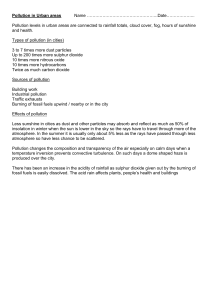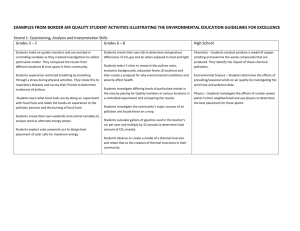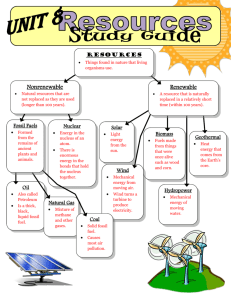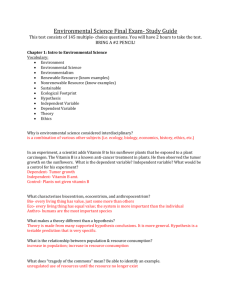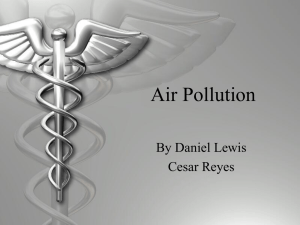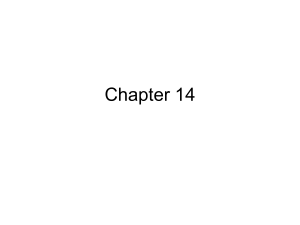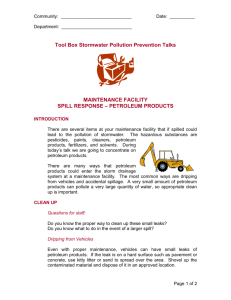Ch 4 Review KEY
advertisement
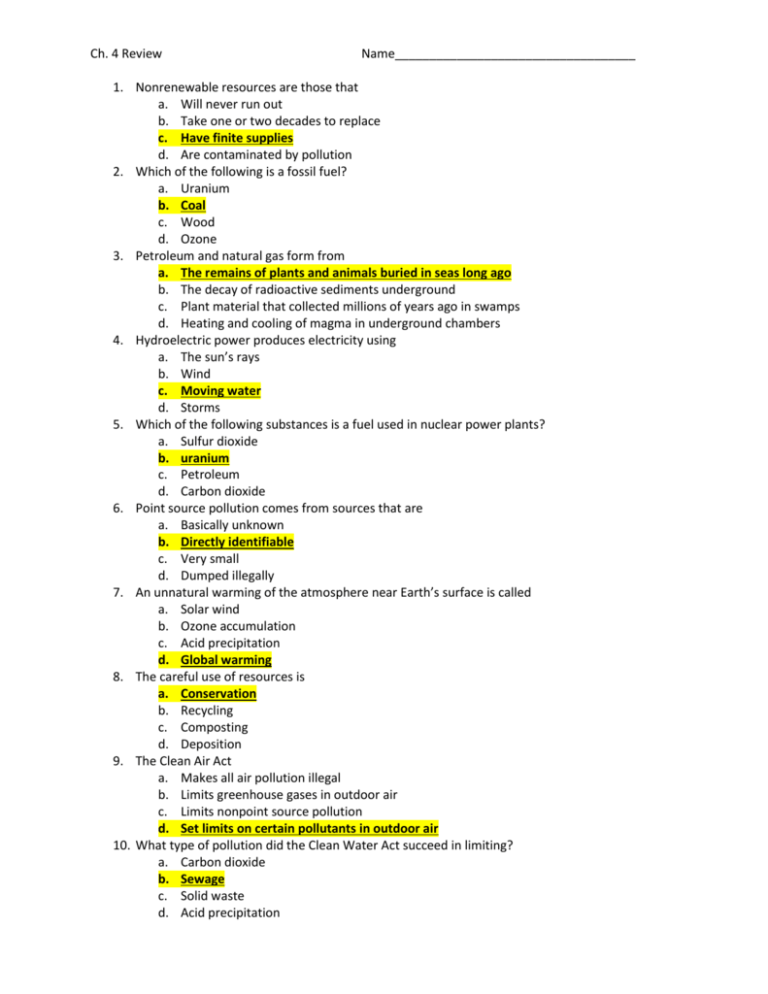
Ch. 4 Review Name___________________________________ 1. Nonrenewable resources are those that a. Will never run out b. Take one or two decades to replace c. Have finite supplies d. Are contaminated by pollution 2. Which of the following is a fossil fuel? a. Uranium b. Coal c. Wood d. Ozone 3. Petroleum and natural gas form from a. The remains of plants and animals buried in seas long ago b. The decay of radioactive sediments underground c. Plant material that collected millions of years ago in swamps d. Heating and cooling of magma in underground chambers 4. Hydroelectric power produces electricity using a. The sun’s rays b. Wind c. Moving water d. Storms 5. Which of the following substances is a fuel used in nuclear power plants? a. Sulfur dioxide b. uranium c. Petroleum d. Carbon dioxide 6. Point source pollution comes from sources that are a. Basically unknown b. Directly identifiable c. Very small d. Dumped illegally 7. An unnatural warming of the atmosphere near Earth’s surface is called a. Solar wind b. Ozone accumulation c. Acid precipitation d. Global warming 8. The careful use of resources is a. Conservation b. Recycling c. Composting d. Deposition 9. The Clean Air Act a. Makes all air pollution illegal b. Limits greenhouse gases in outdoor air c. Limits nonpoint source pollution d. Set limits on certain pollutants in outdoor air 10. What type of pollution did the Clean Water Act succeed in limiting? a. Carbon dioxide b. Sewage c. Solid waste d. Acid precipitation 11. What are the three major types of fossil fuels? a. petroleum b. natural gas c. coal 12. What is a major negative impact of the use of fossil fuels? Burning fossil fuels is a major source of air pollution. 13. What is the difference between a mineral resource and an ore? A mineral resource is a deposit of useful minerals that can be extracted; an ore is a useful metallic mineral that can be mined at a profit. 14. Briefly explain how active solar collectors work. A collector is a blackened, glass-covered box mounted on a roof. The sun’s rays shine on the box and heat the air inside it. The heat warms air or water in pipes that pass through the box. The pipes bring the heated air or water to areas of the building where they are needed. 15. Why do hydroelectric dams have limited lifetimes? Sediment builds up behind the dams, which eventually makes them unusable for producing electric power. 16. Explain why fresh water is a vital resource. People need fresh water for drinking, cooking, growing food, and bathing. 17. How can farmers help protect land resources? Farmers can use methods such as contour plowing and strip cropping to reduce soil erosion and nutrient loss. They can also cut down on chemical contamination of soil by using natural fertilizers such as manure and compost, and by using pest-control methods that rely on fewer pesticides, such as Integrated Pest Management. 18. When were some of the earliest laws passed to deal with water pollution? The 1970’s a. Why were they passed at that time? As the result of a number of serious pollution incidents that got the attention of the public and government officials. 19. Explain why an anticline might be a good place to search for petroleum and natural gas. Anticlines act as oil traps that contain petroleum and natural gas. Anticlines keep the petroleum and gas from escaping to the surface. 20. What are three things that you can do to prevent water pollution? a. Never pour household chemicals down the drain b. Never dump toxic chemicals onto the ground c. Do not put hazardous materials into the trash 21. What are three things that you can do to save energy? a. Recycle when possible b. Turn off lights when you leave a room c. Walk or ride a bike when you can instead of using a car
